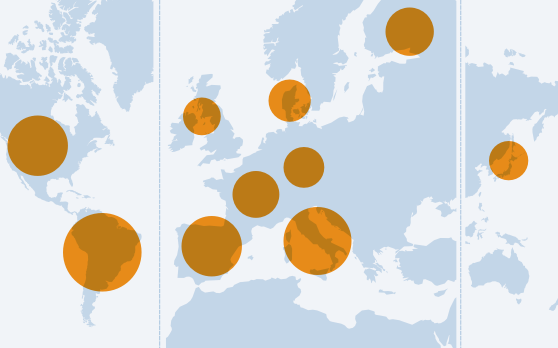Overview
This year's report reveals new insights about digital news consumption based on a YouGov survey of over 80,000 online news consumers in 40 markets including Kenya and the Philippines for the first time.The report looks at the impact of coronavirus on news consumption and on the economic prospects for publishers. It looks at progress on new paid online business models, trust and misinformation, partisanship and populism, and the popularity of curated editorial products like podcasts and email newsletters.
Key findings
Video summary in two minutes
Impact of coronavirus
Television news and online sources have seen a surge in demand, and more people identify television as their main source of news, providing temporary respite from a picture of steady decline.
Paying for news
We have seen significant increases in payment for online news in a number of countries including the United States 20% (+4) and Norway 42% (+8). But across all markets most people are still not paying for online news
Resurgence of email news
In the United States one in five (21%) access a news email weekly, and for almost half of these it is their primary way of accessing news. Northern European countries have been much slower to adopt email news channels, with only 10% using email news in Finland.
Read more on the role and importance of curated email newsletters
Local news under pressure
Local newspapers and their websites remain the top source of news about a particular town or region, reaching four in ten (44%) weekly. But Facebook and other social media groups are now used on average by around a third (31%) for local news, putting further pressure on companies and their business models.
Read more international comparisons on local and regional news
Climate change and the role of media
Overall, almost seven in ten (69%) think climate change is a serious problem, but in the United States, Sweden, and Australia a significant minority dispute this. Younger groups access much climate news from social media and by following activists like Greta Thunberg.
Interactive
 Explore the data behind the report
Explore the data behind the report
Explore the 2020 data and build your own charts. Compare dimensions and data types between or within countries and markets
About us
2020 The Reuters Institute Digital News Report aims to deliver useful and timely data about the transition to digital. Read more about our annual survey ...
Resources
You can view or download a Powerpoint presentation of all of the charts and tables in the 2020 report.
Supporters
Country reports in national languages:
Click links for more detailed research from partners
AUSTRALIA: News and Media Research Centre, University of Canberra
AUSTRIA: Department of Communication Science, University of Salzburg
BELGIUM: SMIT, Vrije Universiteit Brussel – Policy brief
CANADA: Center d’études on the media (CEM), Laval University
CROATIA: University of Zagreb
IRELAND: Institute for Future Media and Journalism
FINLAND: University of Tampere
GERMANY: Leibniz-Institut für Medienforschung
NETHERLANDS: Commissariaat voor de Media
PORTUGAL: Observatório da Comunicação (PDF)
SPAIN: Center for Internet Studies and Digital Life, Universidad de Navarra
 Explore the data behind the report
Explore the data behind the report














Comment & analysis
Philippines: Media under increased attack from populist president and allies
Yvonne T. Chua from the University of the Philippines looks at what lies behind tensions between the government and much of the media as the country is included in our survey for the first time
How do People Want the Media to Cover Politics?
As the structure of the media environment has changed in recent years, so has the relationship between politics and journalism. Richard Fletcher explores the dilemmas.
The Resurgence and Importance of Email Newsletters
How and Why People are Paying for Online News
How People Access News about Climate Change
Global Turmoil in the Neighbourhood: Problems Mount for Regional and Local News